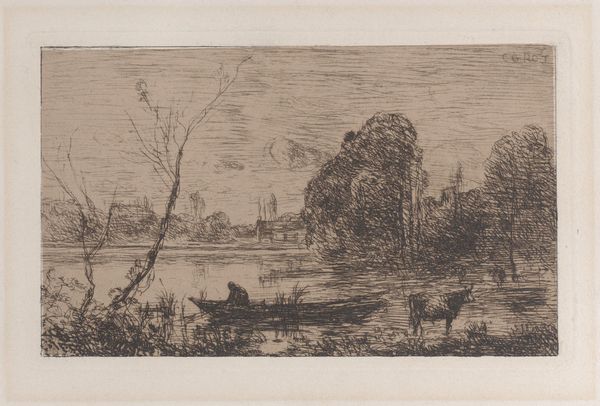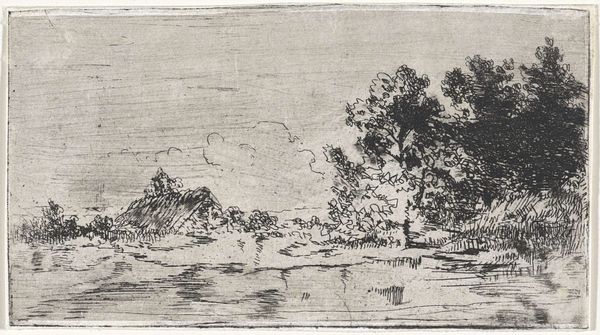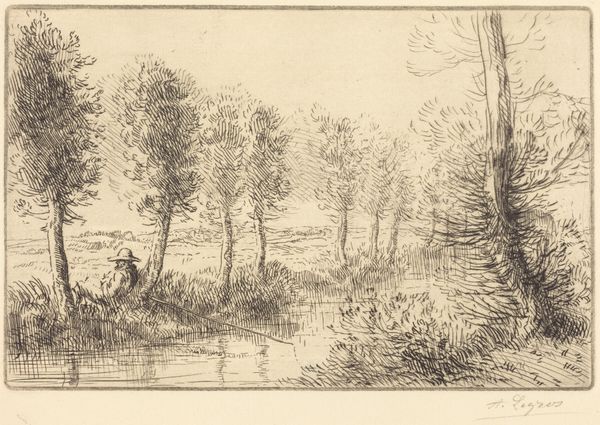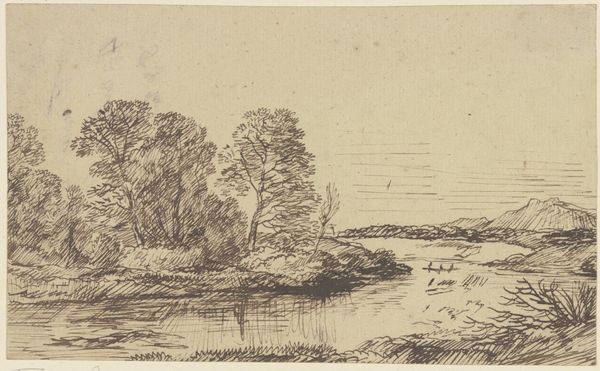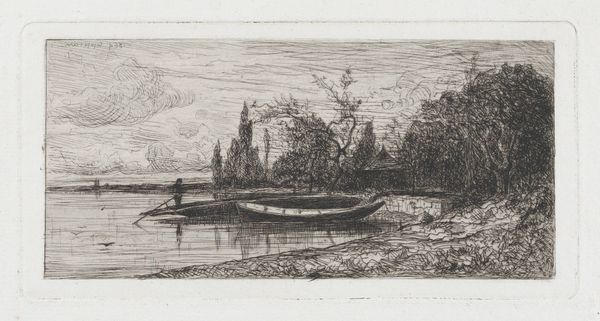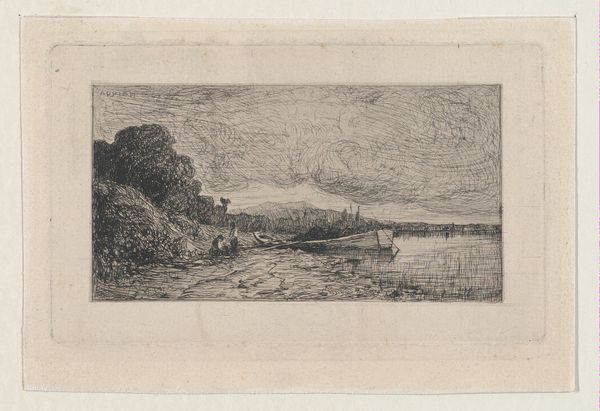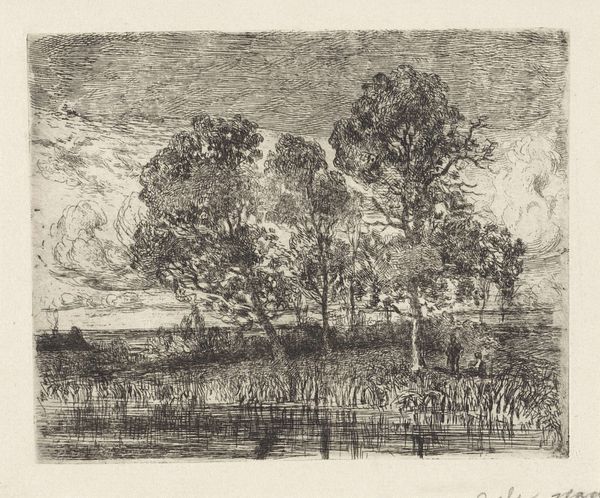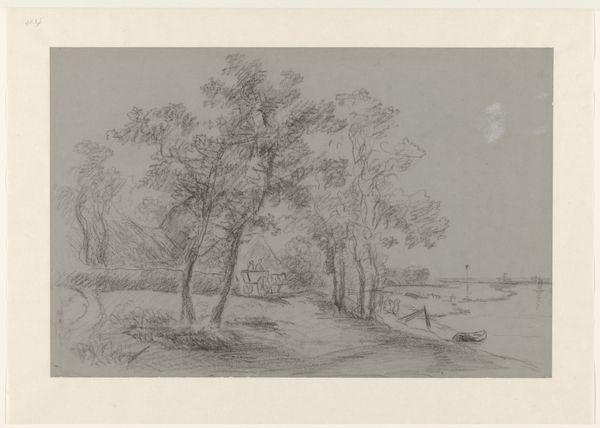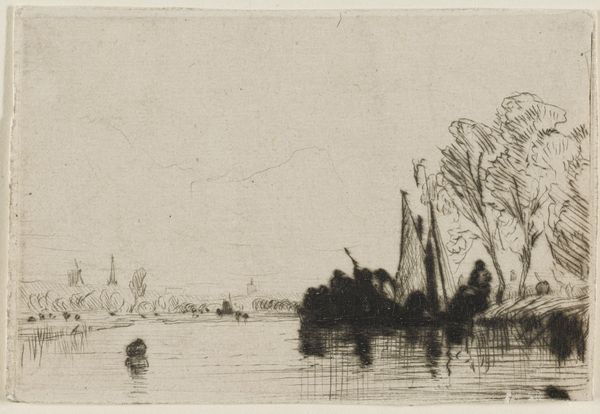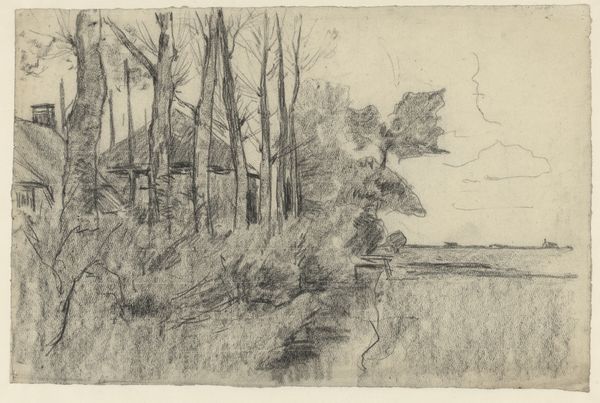
Ville d'Avray: Boat Under the Willows (Morning Effect) 1857
0:00
0:00
Dimensions: Plate: 3 1/16 in. × 5 in. (7.8 × 12.7 cm) Sheet: 3 3/4 × 5 1/2 in. (9.5 × 14 cm)
Copyright: Public Domain
Curator: "Ville d'Avray: Boat Under the Willows (Morning Effect)," made by Camille Corot in 1857. It's an etching, currently residing at the Metropolitan Museum of Art. Editor: It's so delicate. The way the light catches the leaves... It feels almost dreamlike, capturing a fleeting moment of stillness. I like its muted quality, but there's something haunting about it, too. Curator: Indeed. The image is rich in symbols connected with a Romantic sensibility and speaks to a vision of harmonious nature: water often signals the unconscious, trees speak to longevity, renewal, and knowledge. In this piece, we might even consider the way the lone figure in the boat mediates between both states. Editor: What's fascinating to me is how Corot employed etching, which isn't always forgiving. The marks, the bites of acid – they each play a role in achieving this effect. He harnesses the materiality of the metal to describe something as ethereal as morning light, almost disguising labor through the seeming spontaneity. Curator: I would venture to suggest that we consider that choice carefully, too. As an intaglio print, this piece inherently requires an embrace of time through carefully prepared materials in order to preserve it in perpetuity, in essence. Thus, that adds depth to my thinking regarding his subject: it's all about capturing a temporal state. The symbolism extends even to how the piece functions in a practical, material sense. Editor: That reading enhances what Corot accomplished, I think. Knowing he's playing with ideas of permanence using this impermanent medium underscores a connection to mortality, the beauty we notice is also that which will pass away... That's how the symbolism emerges within the making, not separate from it. It feels both fresh and deeply contemplative. Curator: Well, I couldn't agree more! Corot encourages us to find symbolic layers within simple landscape scenes, making us more aware of how art and reality often merge. Editor: And by making us attend to the artistry involved, it shows the way materials are often quiet participants that carry their own weight of meaning within representation.
Comments
No comments
Be the first to comment and join the conversation on the ultimate creative platform.

